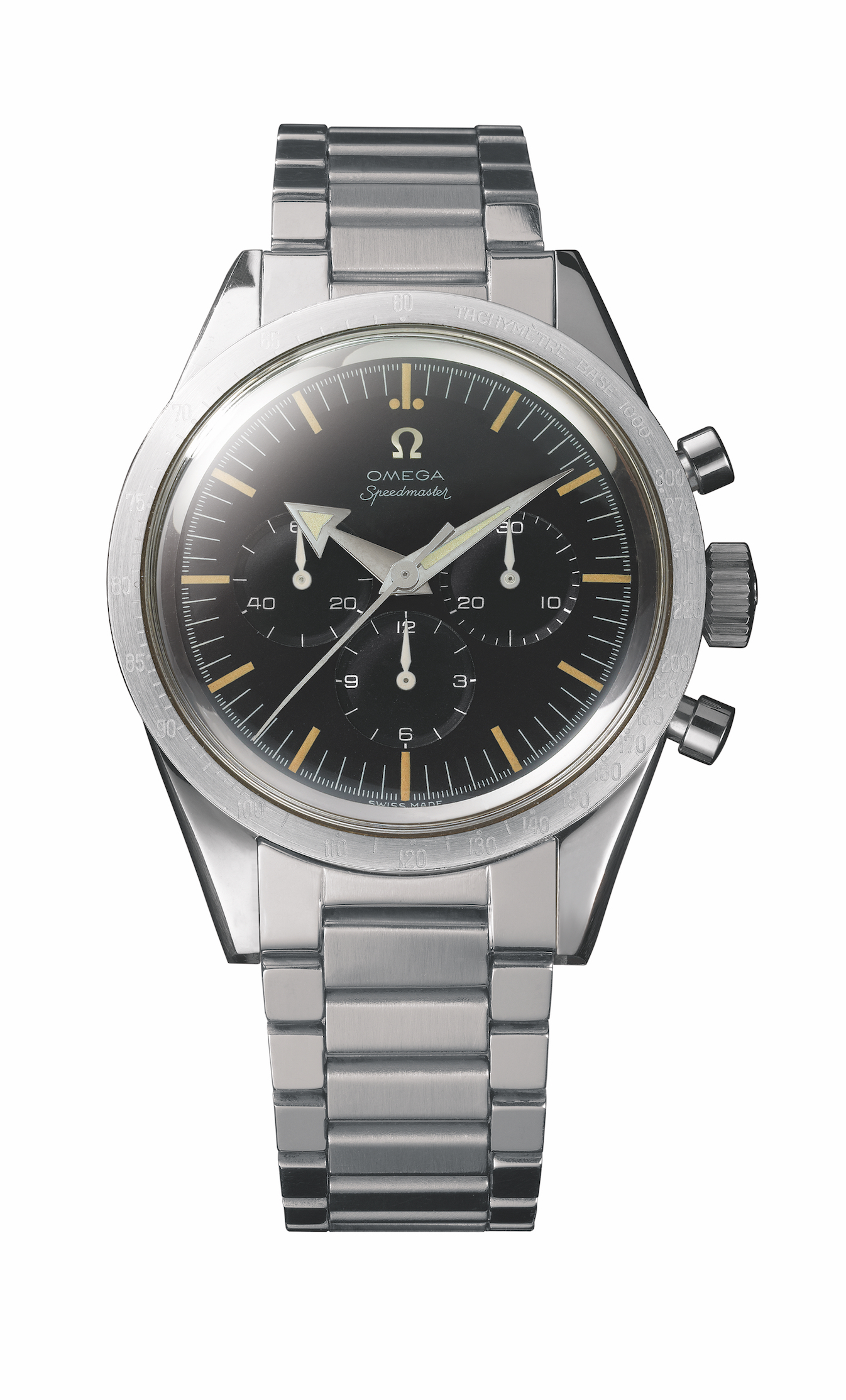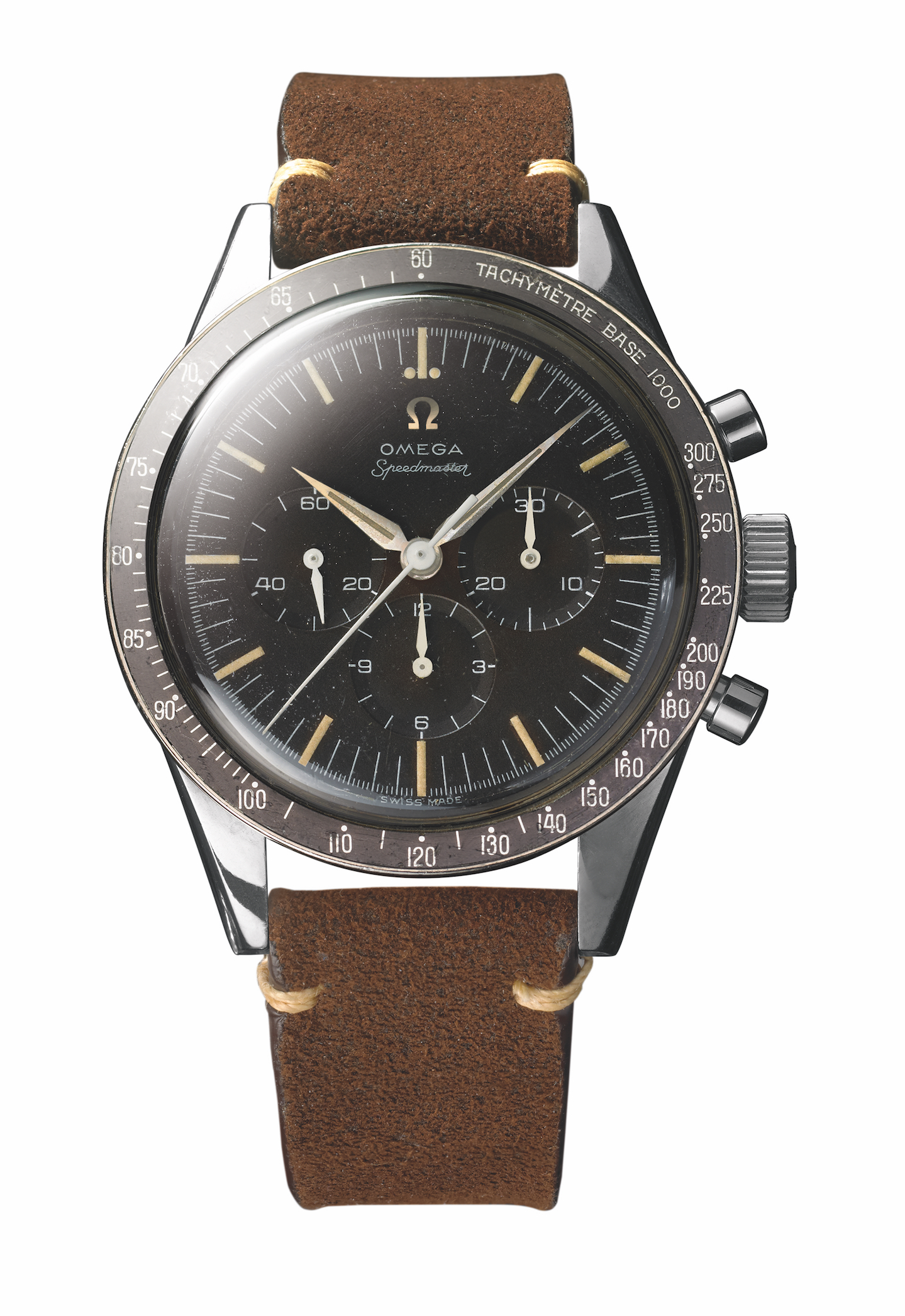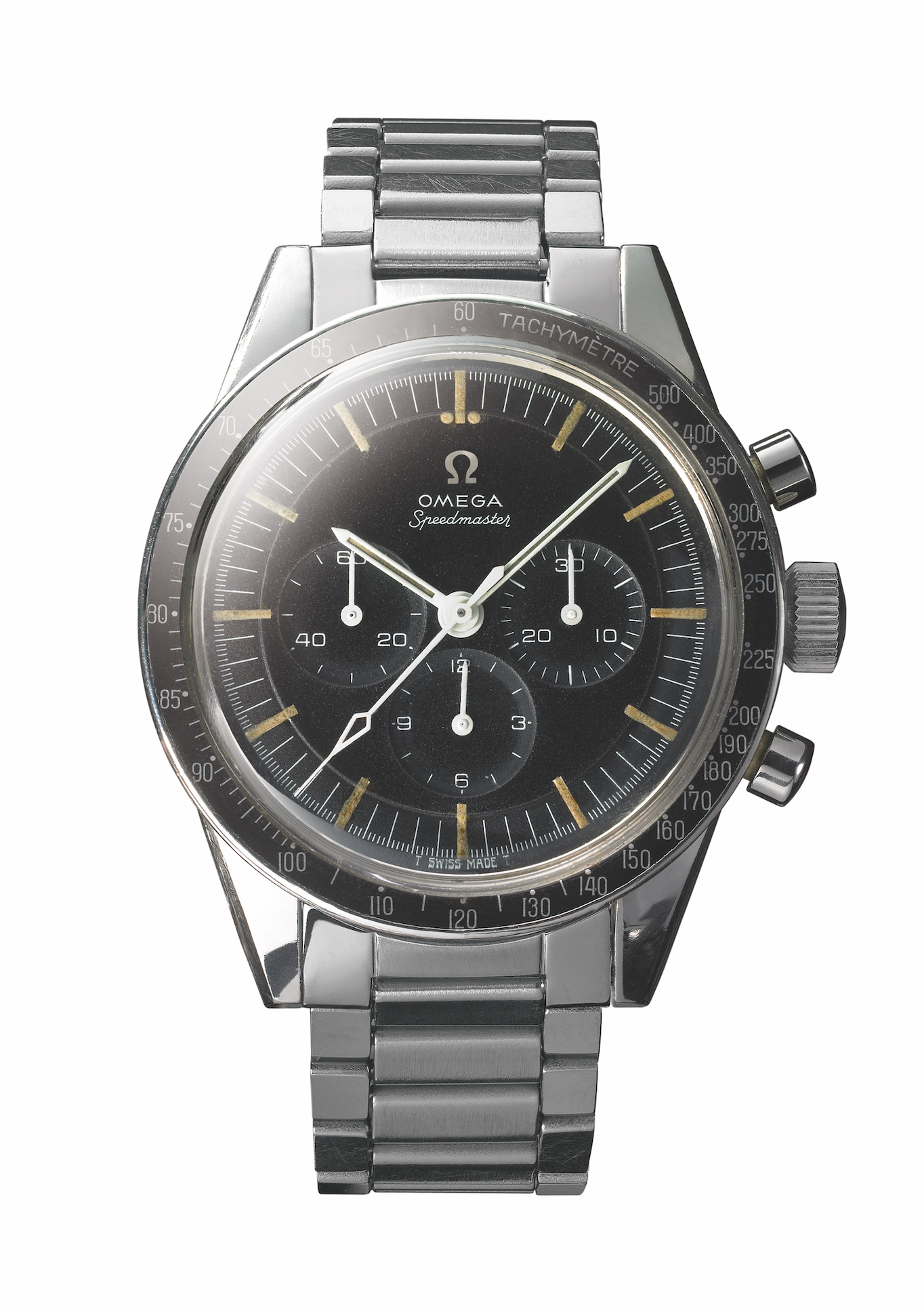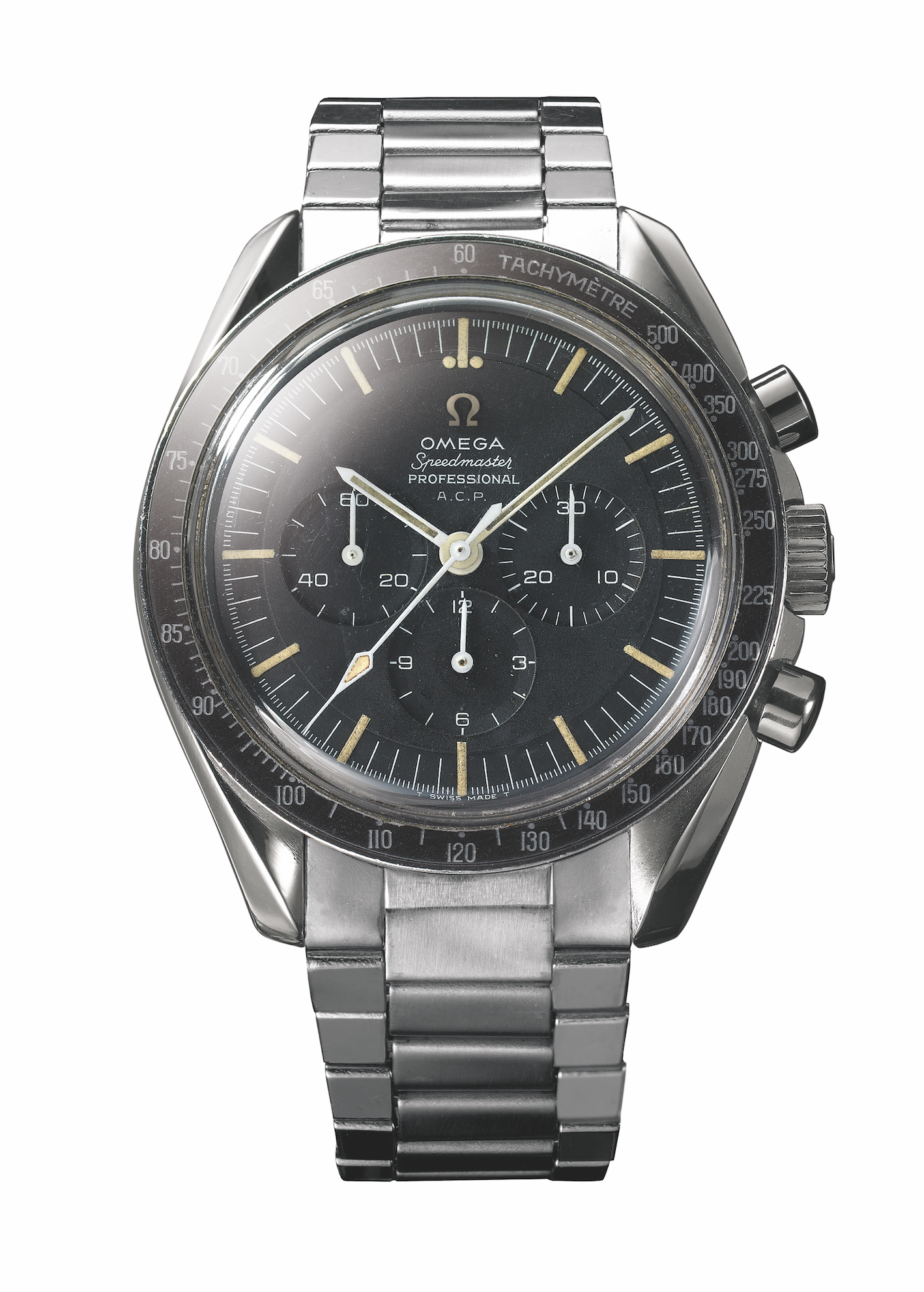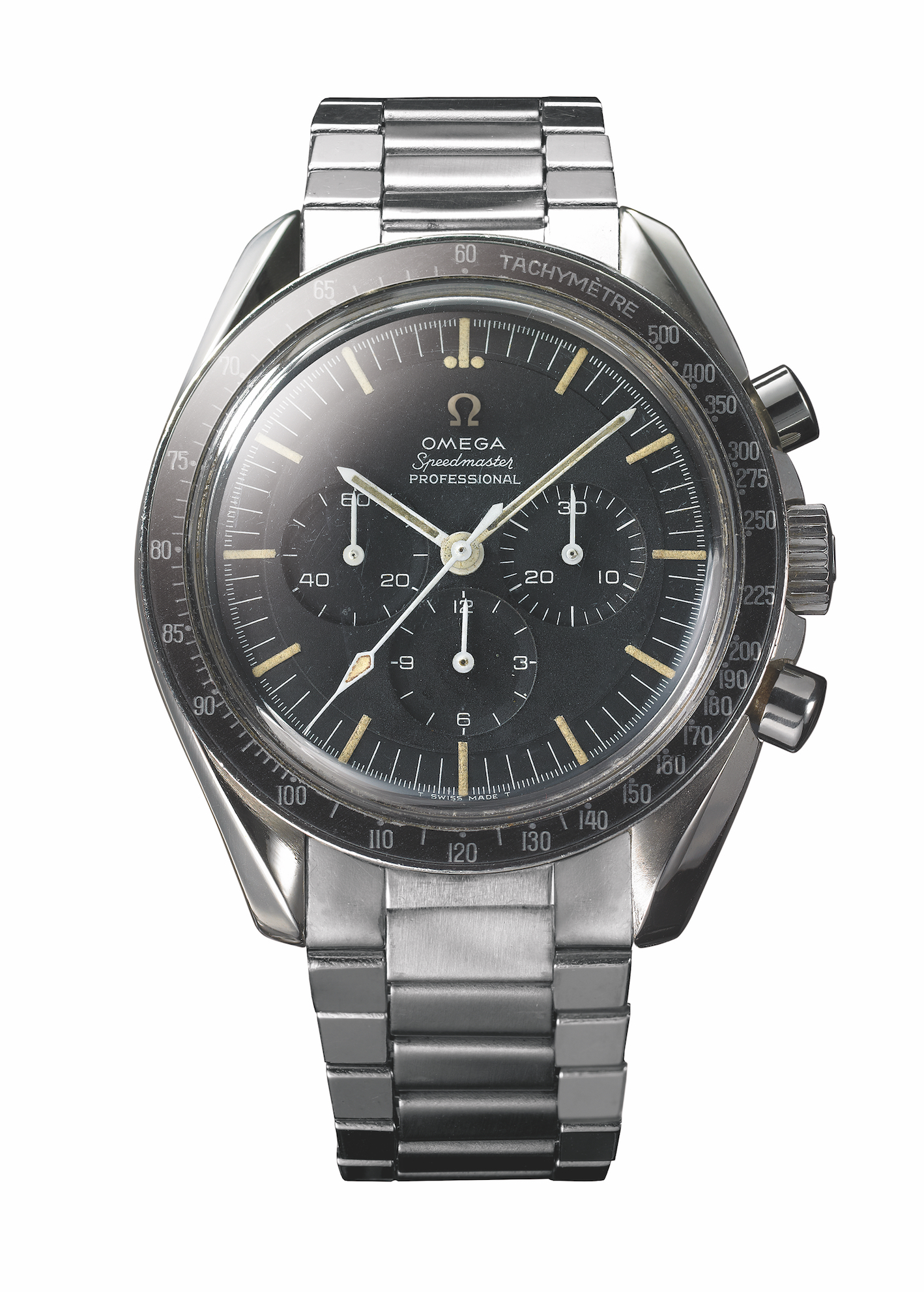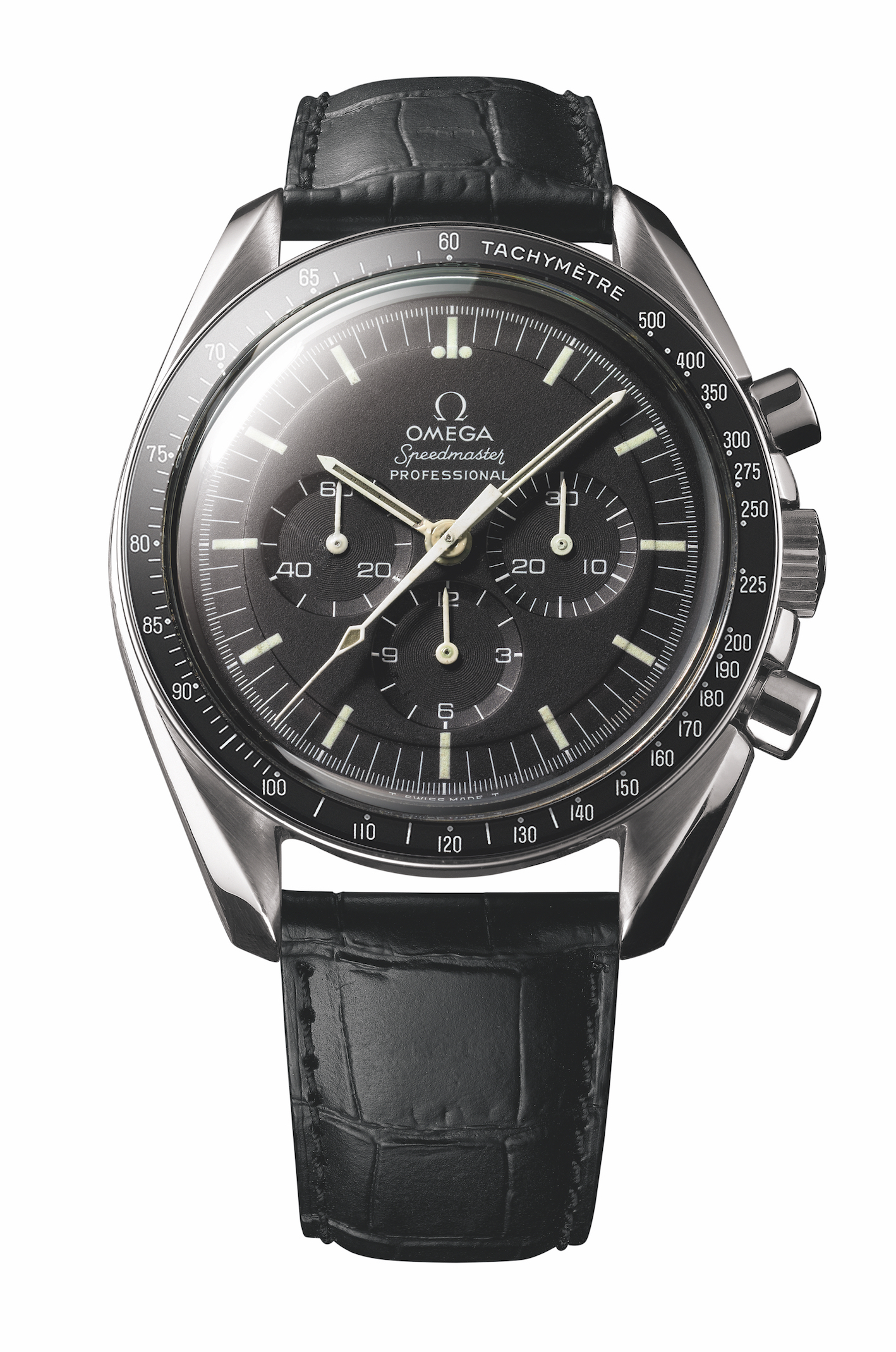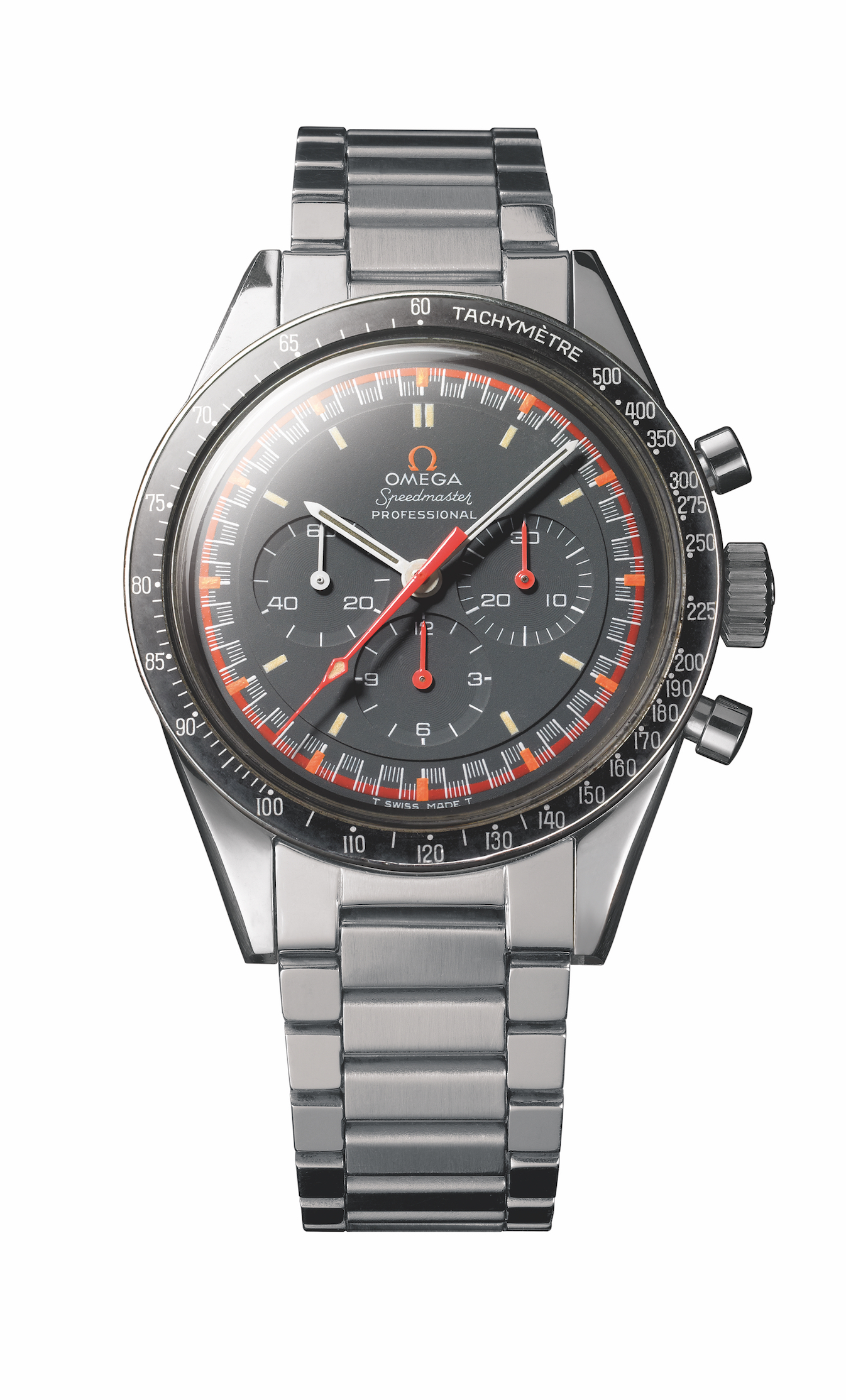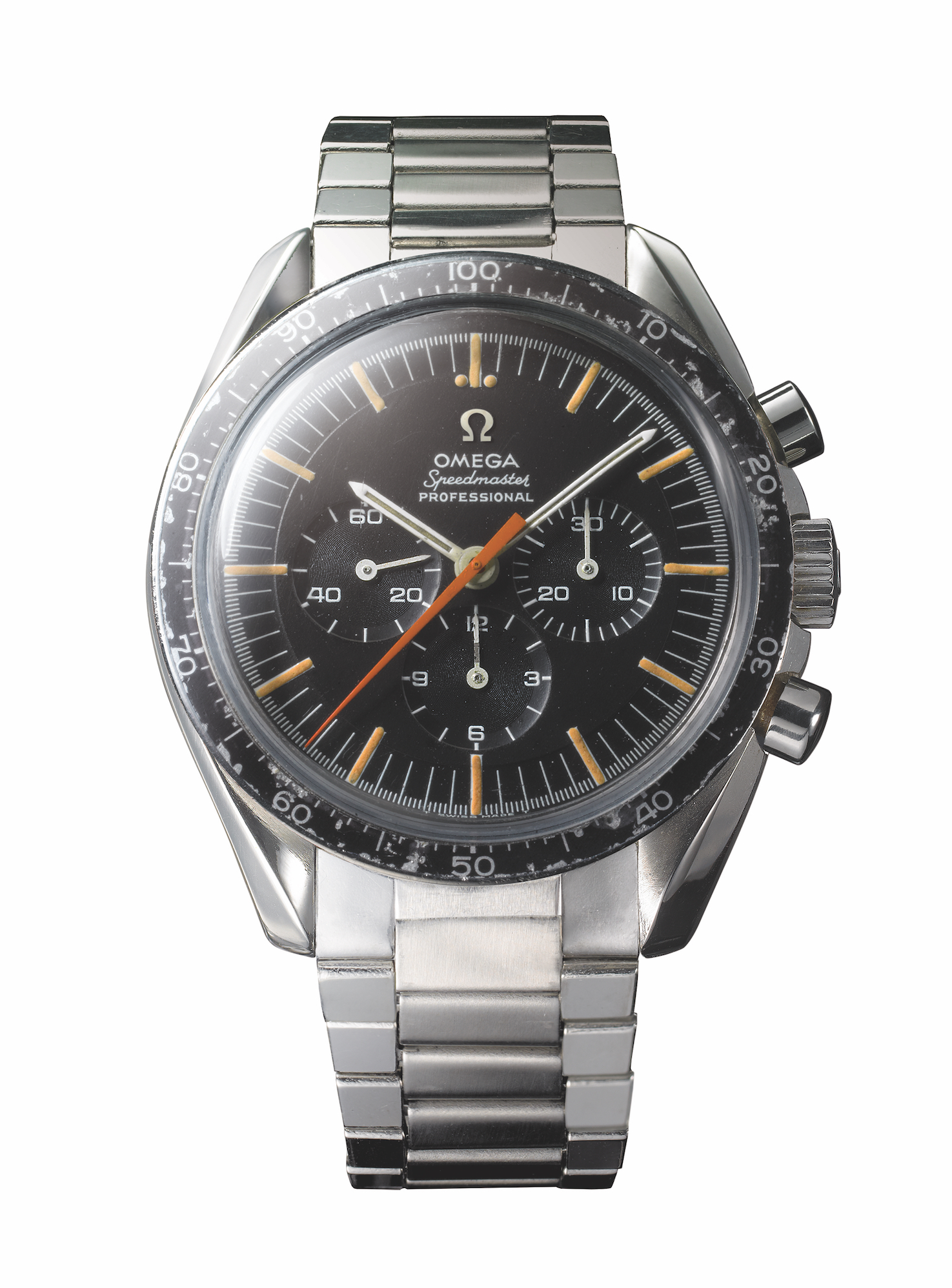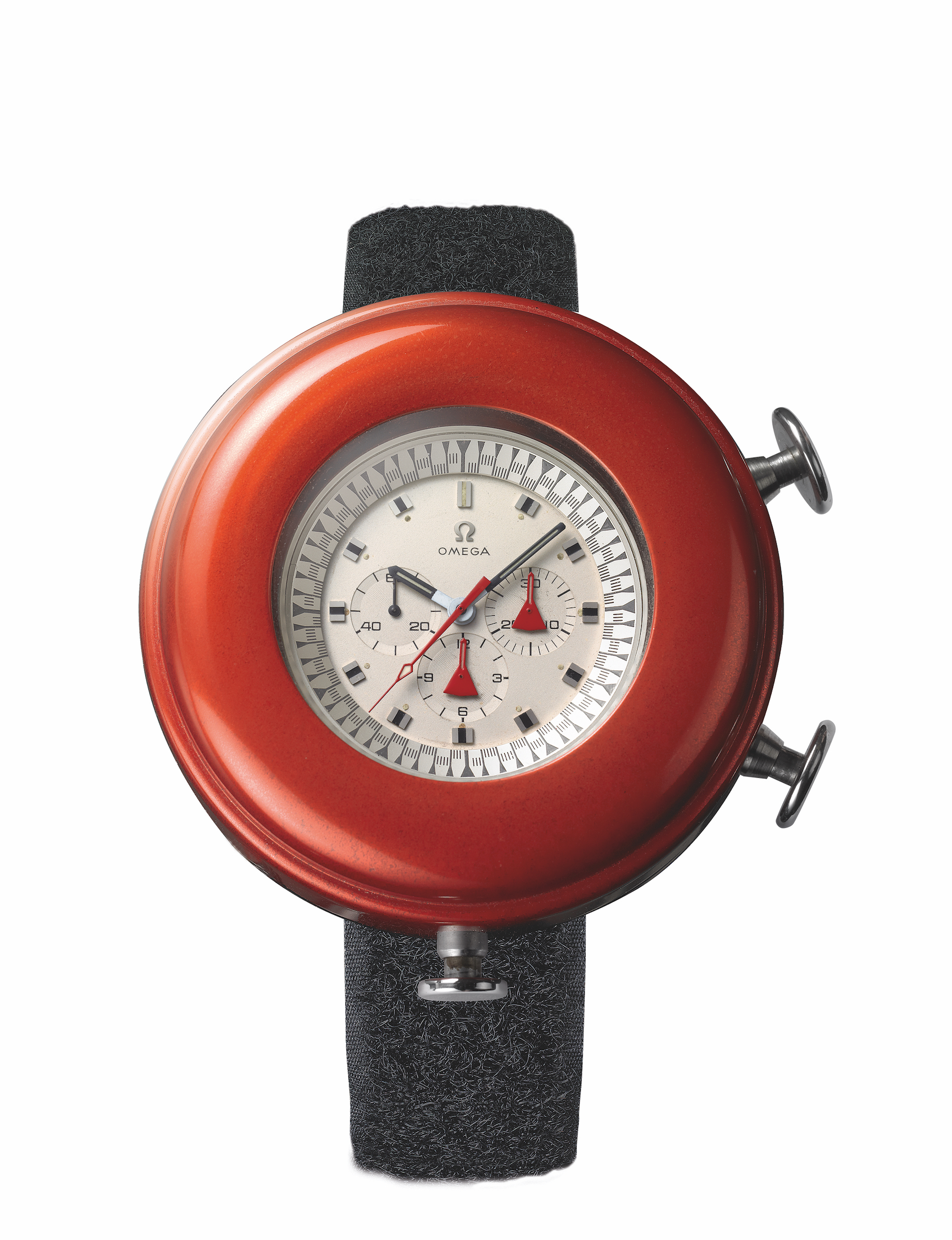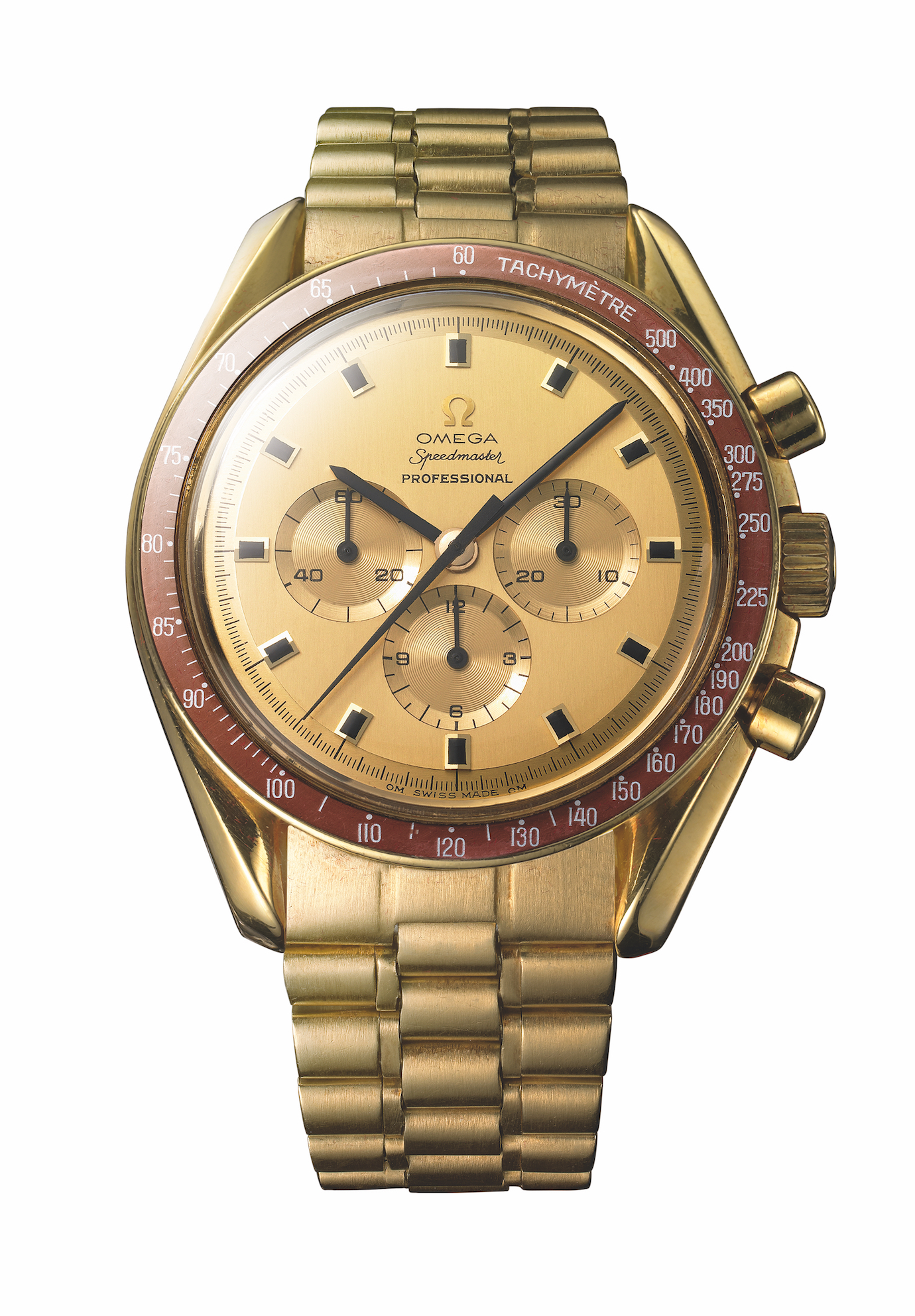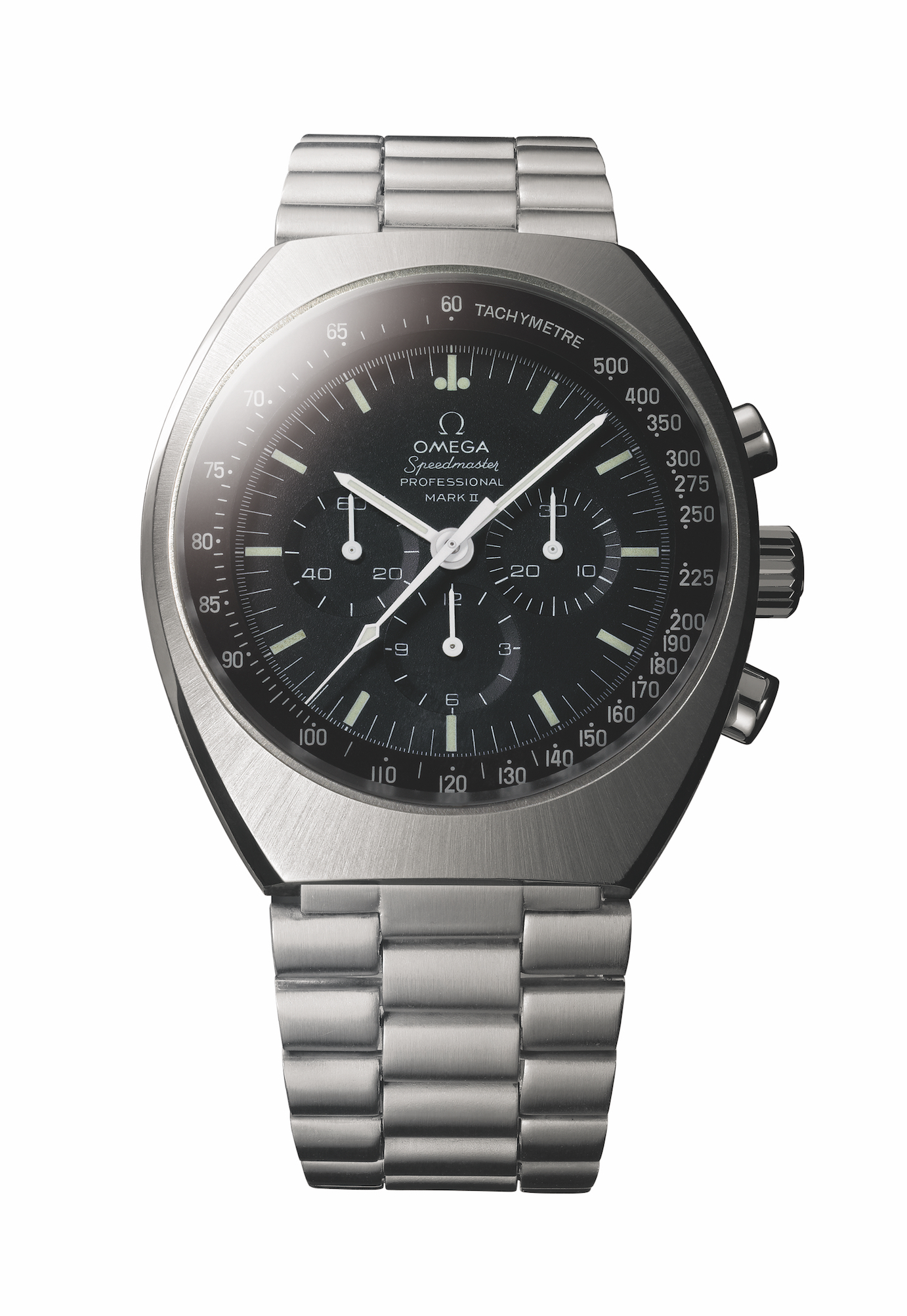1957
“BROAD ARROW”
The first Speedmaster
The original timepiece in a legendary family. Called the “Broad Arrow” due to its distinctive hands, this was not only the first Speedmaster, it was also the first chronograph wristwatch in the world with its tachymeter scale on the bezel as opposed to printed on the dial – a feature designed for the benefit of racing car drivers. This is perhaps the most highly valued of all the Speedmasters and it signalled the start of a very special journey.
1959
FIRST OMEGA IN SPACE
Worn by Walter Schirra
The second version of the Speedmaster, this model differed from the original “Broad Arrow” due to its black aluminium bezel, the lollipop seconds hand for Air Force orders, and “Alpha” style hour and minute hands. The model went on to be the first OMEGA worn in space on the wrist of Walter Schirra on October 3rd 1962. He chose the Speedmaster as his personal watch on the Sigma 7 mission of the Mercury programme. From this moment, the Speedmaster’s space legacy had begun.
1963
THIRD GENERATION
Tested and qualified by NASA
This Speedmaster model was the first watch to pass NASA’s rigorous testing for flight qualification. A number of brands submitted their timepieces for testing, but only the Speedmaster survived. It was launched into legend when it was worn on Gemini and Apollo missions, serving the astronauts with the utmost precision and reliability. Interestingly, the first model to be qualified would also be one of the last worn on the moon in 1972.
1964
A.C.P
Delivered to the Automovil Club Peruano
Staying true to the Speedmaster’s racing origins, this rare model was specially ordered by the Automovil Club Peruano based in Lima, Peru. The tachymeter scale on the bezel was ideal for timing laps on the racetrack, which made the Speedmaster a popular choice for those in the motoring industry. With an order of just 50 pieces, this is a very rare piece, distinguished by the A.C.P lettering on the dial.
1965
THE MOONWATCH
First watch worn on the moon
When Neil Armstrong and Buzz Aldrin stepped onto the lunar surface in 1969, this Speedmaster model became the first watch ever worn on the moon. In fact, it has since become the watch that has served on the most lunar missions. In design, the watch was the first Speedmaster featuring an asymmetrical case, done so to provide added protection for the crown and pushers. For the first time, the word “Professional” was also printed on the dial.
1968
THE MOONWATCH
Direct link to the Moonwatch of today
Launched in 1968 with the new calibre 861, this model marked a major turning point in the history of the Speedmaster. Not only did the new movement provide extra innovation, but it was also the first, from 1970 onwards, to include the famous words; “FLIGHT-QUALIFIED BY NASA FOR ALL MANNED SPACE MISSIONS”, as well as “THE FIRST WATCH WORN ON THE MOON”.
1968
RACING DIAL
For enhanced readability
The origins of the rare Racing Dial model are still shrouded in mystery, but it is generally accepted that the bicolor minute markers and orange hands and logo were created to make the chronograph easier to read. This particular model has inspired subsequent editions throughout the years including the 2004 limited series which was released in Japan.
1968
ULTRAMAN
Worn in the TV series
Having appeared in the Japanese science fiction TV show “The Return of Ultraman” in 1971, this rare model is most notably distinguished by its orange seconds hand. The creator of the Ultraman series, Eiji Tsuburaya, was known for including interesting watches in his productions, and this very uncommon Speedmaster is no exception. It is unknown how many genuine pieces still exist.
1969
ALASKA I (prototype)
Specially made for NASA
“Alaska” was OMEGA’s chosen code-name for everything that involved NASA and was always deemed top-secret. To meet the demands of the extreme temperatures of space, the “Alaska I” prototype had a removable anodized aluminium outer case or “thermal shield” and a pure titanium inner case making it the first wristwatch in the world to be cased in pure titanium. The white dial was added to better reflect the heat of the sun.
1969
COMMEMORATIVE EDITION
For OMEGA’s achievements in space
This was the first 18K gold Speedmaster, created in a numbered edition with a rare burgundy bezel. The first watches in this series were presented to 19 astronauts during a gala dinner in Houston, Texas on November 25th 1969 to celebrate the Apollo 11 moon landing. Three watches were also awarded posthumously to the three crew of Apollo I – Virgil Grissom, Ed White and Roger Chaffee.
1969
MARK II
First redesign
This streamlined Speedmaster Mark II signalled the first redesign of OMEGA’s popular chronograph. Created in 1969, it extended the Speedmaster line with a brand new look and was available in stainless steel, 18K gold, or gold-capped versions with various dial and timing scale combinations. The MARK II, with its barrel shaped case and enhanced readability, was also the first Speedmaster that did not use hesalite crystal.

